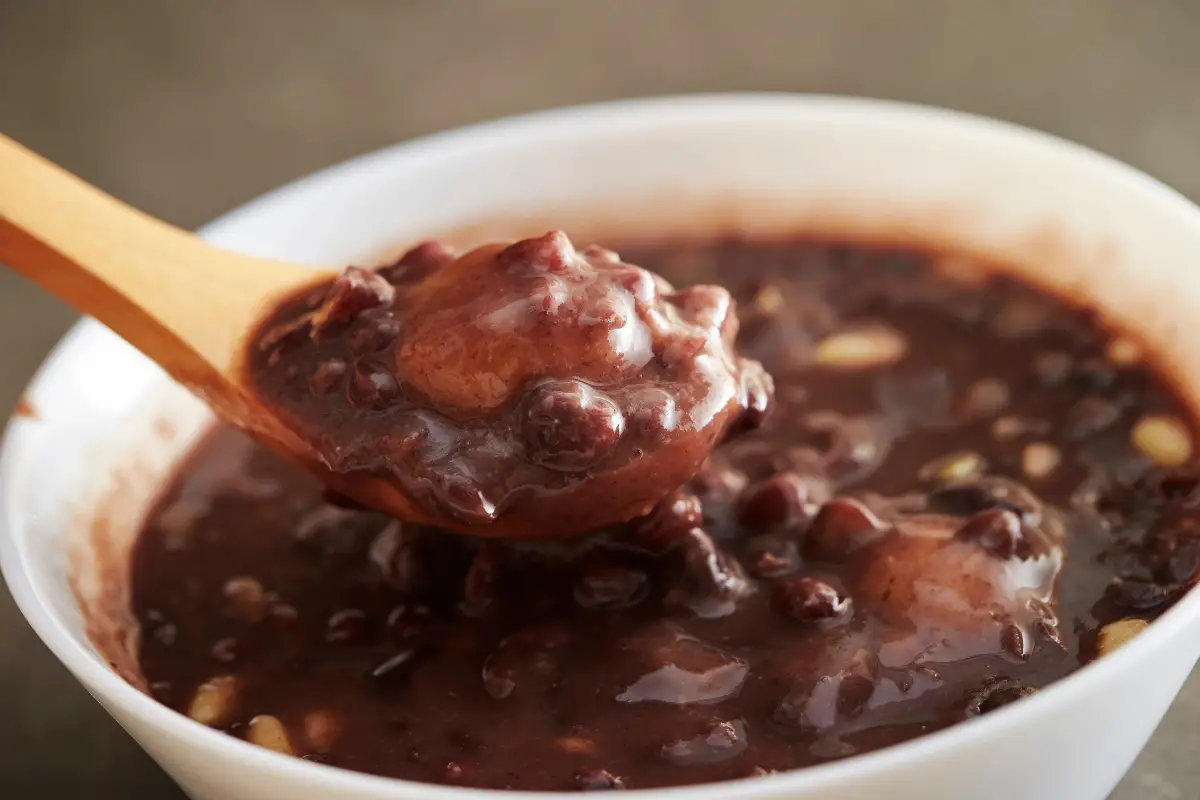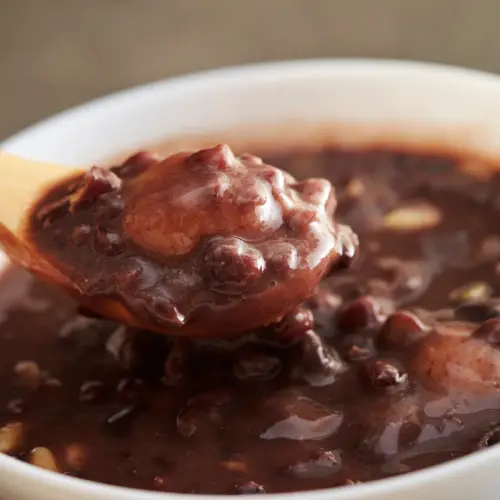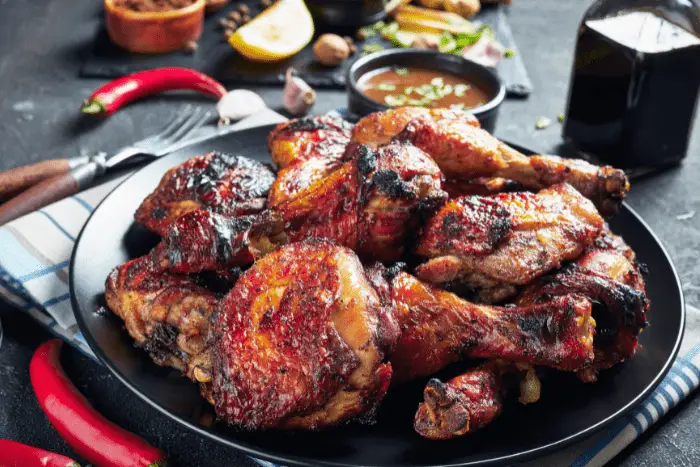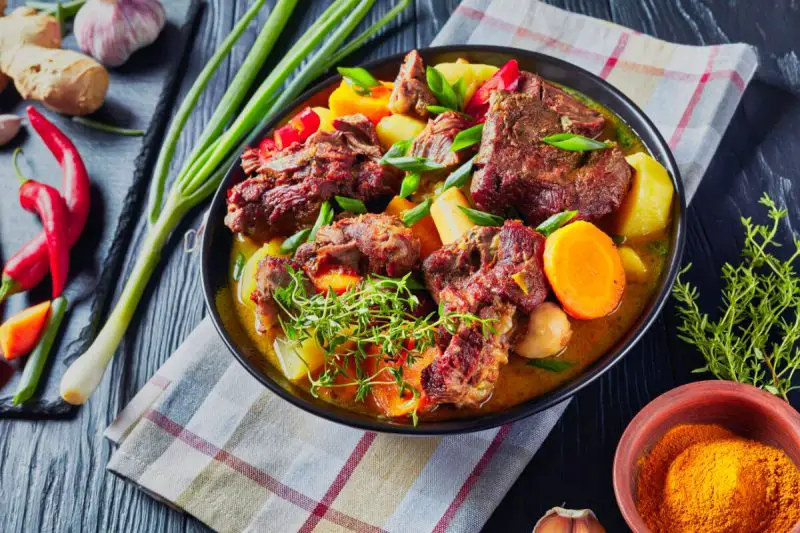
Haitian Tchaka recipe, a traditional stew, is a culinary masterpiece that highlights the country’s thriving agricultural sector and many cultural traditions.
This cuisine, which is generally given at special events and festivals in Haiti, has its origins in the culture and traditions of the Haitian people and is made by combining maize, beans, and various meats.
Want more ideas to round-out your Haitian Recipe Box?
A lot of great options are in these posts!
The Taino were the original inhabitants of Hispaniola, the island currently shared by Haiti and the Dominican Republic, and their culture is where Tchaka got its start. The Taino culture’s cuisine was based mostly on maize, a staple grain that was used in a wide variety of Taino recipes.
You May Want to Join The World Recipes With Our Big Escape
Share your own recipes in our Facebook Group. Find recipes from all over the world. Learn more about International Cuisine and how you can surprise your family with new and exciting foods from all over the world.
For More Photos Visit Our Instagram at World Recipes Daily
The island’s later colonization by European powers like Spain and France introduced new products and cooking methods into Haitian cuisine.
Tchaka exemplifies the rich cultural diversity of the Caribbean by fusing Taino cuisine with that of other indigenous peoples as well as with European and African culinary traditions.
Tchaka’s backbone is a blend of corn and beans that have been slow-cooked together. This combination not only showcases the rich agricultural diversity of Haiti, but also forms a complete protein, ensuring that all of the dish’s nutritional needs are met.
Tchaka’s deep, savory flavor comes from the numerous meats that are often added to the stew while it cooks, such as pig, beef, or smoked herring.
To give the meal the richness of taste and complexity that is signature to Haitian cooking, it is seasoned with a combination of Haitian spices and aromatics including onions, garlic, and peppers.
Tchaka’s unusual combination of flavors and spices has captured the attention of foodies all over the world, and it’s no longer only a Haitian delicacy.
The dish is a valued staple of Haitian cuisine and a symbol of the fortitude and ingenuity of the Haitian people because of its historical and cultural significance as well as its substantial and delicious character.
The Haitian Tchaka recipe is a delicious and filling dish that represents the country’s vibrant culture, thriving agricultural sector, and multifaceted past.
The original Taino people, as well as African, European, and Caribbean influences, may be seen in the fusion of maize, beans, meats, and spices that characterizes modern Haitian cuisine.
Tchaka, a traditional dish given during festivities like the Festival of the Dead, is a monument to the resilience and solidarity of the Haitian people as well as a tasty and filling dinner.
3 Reasons People Love the Haitian Tchaka Recipe
1. Nutritious and Satisfying Meal: The fact that it’s healthy and filling makes the Haitian Tchaka recipe a fan favorite. The dish’s mix of maize and beans makes a complete protein, including all of the necessary amino acids.
This combination is not only a great way to get your daily dose of energy, but it’s also rich in beneficial nutrients including fiber, vitamins, and minerals. Meats like pig, beef, or smoked herring can be added for an extra nutritional boost, providing protein, iron, and other minerals.
Tchaka’s popularity among people in search of a substantial and healthy supper can be attributed to the fact that it is prepared using only the freshest, most wholesome ingredients.
2. Rich Cultural and Historical Significance: Cultural and historical importance is another reason why Haitian Tchaka is so popular. The dish has its origins with the native Taino people, who grew maize as a primary food source.
As time went on and European forces conquered Haiti, new products and methods from Africa, Europe, and the Caribbean made their way into the country’s cuisine. Tchaka, which is a lovely combination of indigenous cooking traditions and many cultural features, is a wonderful example of this dynamic past.
The dish is a symbol of the perseverance and resourcefulness of the Haitian people, who have found ways to adapt and retain their culinary tradition despite harsh conditions. Tchaka is not just a tasty treat, but also a way to learn about and celebrate Haiti’s vibrant culture and heritage.
3. Symbol of Community and Togetherness: A third reason why Haitian Tchaka is so popular is that it represents unity and camaraderie in the local community.
Tchaka is a traditional Haitian drink that is consumed during festive events and festivals, most notably the Festival of the Dead. The dish is meant to bring people together as they celebrate the harvest and their ancestors with a dinner together.
Tchaka’s popularity has spread far beyond Haiti, bringing together people of all walks of life to share in the dish’s exotic flavors and ingredients. Tchaka is a reminder that food is a unifying force that can bridge cultural and geographical divides and bring people together in an increasingly globalized world.

How To Make Our Haitian Tchaka Recipe
Ingredients: (8 servings)
1 lb black-eyed peas
1 lb pork shoulder or beef stew meat, cut into bite-sized pieces
2 tbsp olive oil
1 onion, chopped
2 garlic cloves, minced
1 green bell pepper, chopped
1 red bell pepper, chopped
2 scallions, chopped
1 tsp dried thyme
1 tsp paprika
1 tsp ground cumin
2 tsp salt
1 tsp black pepper
1 hot pepper (habanero or scotch bonnet), optional
4 cups water
2 cups coconut milk
Instructions:
1. Rinse and soak the black-eyed peas in water overnight. Drain and rinse before cooking.
2. Heat the olive oil in a large pot or Dutch oven over medium-high heat.
3. Add the pork or beef to the pot and brown on all sides.
4. Add the onions, garlic, bell peppers, scallions, thyme, paprika, cumin, salt, and black pepper. Stir well to combine.
5. Add the hot pepper, water, and coconut milk. Stir to combine.
6. Add the black-eyed peas to the pot and stir well to combine.
7. Bring the mixture to a boil, then reduce the heat to low and simmer, covered, for 1 1/2 to 2 hours, or until the peas are tender and the meat is cooked through.
8. Serve hot with rice or cornbread.
Nutritional Information For the Haitian Tchaka Recipe
Calories: 415
Carbohydrates: 35g
Protein: 26g
Fat: 19g
Saturated Fat: 11g
Cholesterol: 53mg
Sodium: 663mg
Potassium: 840mg
Fiber: 10g
Sugar: 5g
Prep Time: 10-15 minutes (plus overnight soaking for the black-eyed peas)
Cooking Time: 1 1/2 to 2 hours
Pots, Pans, and Cooking Equipment Needed for the Haitian Tchaka Recipe
Large pot or Dutch oven
Cutting board and knife
Measuring cups and spoons
Stirring spoon or spatula
Best Way to Store Leftovers For the Haitian Tchaka Recipe
The best way to store leftover Haitian Tchaka is to transfer it to an airtight container and store it in the refrigerator for up to 3 days. Reheat it in the microwave or on the stove with a little bit of water or broth until heated through.
Possible Substitutions for Ingredients For the Haitian Tchaka Recipe
Pork or beef can be substituted with chicken or turkey.
Black-eyed peas can be substituted with red beans, kidney beans, or chickpeas.
Coconut milk can be substituted with almond milk or soy milk.
Ingredients to Substitute for a Vegetarian Version of the Haitian Tchaka Recipe
To make a vegetarian version of Haitian Tchaka, omit the pork or beef and use vegetable broth instead of water. You can also add vegetables like carrots, sweet potatoes, or squash for extra flavor and nutrition.
Tips and Tricks for Easier Creation
Soak the black-eyed peas overnight to reduce cooking time and ensure even cooking.
Cut the meat into bite-sized pieces for faster cooking and easier serving.
Use a Dutch oven or heavy-bottomed pot to prevent burning and sticking.
Add more water or broth as needed to prevent the mixture from drying out.
Serve with rice or cornbread to soak up the flavorful sauce.
Possible Side Dishes and Desserts to Serve With the Haitian Tchaka Recipe
Haitian-style rice and beans (diri ak pwa)
Fried plantains (bananes pesées)
Haitian-style cornmeal pudding (pen patat)
Sweet potato pie (pen patat pie)
How To Serve the Haitian Tchaka Recipe
Serve the Haitian Tchaka hot, straight out of the pot, with rice or cornbread. Leftovers can be reheated and served for lunch or dinner with additional water or broth added to thin out the sauce.
FAQs About the Haitian Tchaka Recipe
Is Tchaka a traditional Haitian dish?
Yes, Tchaka is a traditional Haitian dish made with black-eyed peas, meat, and vegetables.
What can I use instead of meat in the recipe?
You can use chicken, turkey, or vegetarian protein sources such as tofu or tempeh instead of meat in the recipe.
How can I make the dish spicier?
You can add more hot peppers or hot sauce to the dish to make it spicier, or you can omit the hot peppers if you prefer a milder flavor.
Can I make the dish in a slow cooker?
Yes, you can make the dish in a slow cooker. Brown the meat and sauté the vegetables in a separate pan, then add everything to the slow cooker along with the black-eyed peas, water, and coconut milk.
What can I serve with Tchaka?
Tchaka is traditionally served with rice or cornbread, and can be accompanied by fried plantains, salad, or other Haitian side dishes.
Final Thoughts
The Haitian Tchaka recipe is a cuisine that has gained the hearts of people all over the world because of its deliciousness, healthiness, and cultural significance. Corn, beans, and a variety of meats come together in this one-of-a-kind dish, which is then seasoned with a special blend of Haitian spices and aromatics.
Tchaka is a wonderful tribute to Haiti’s dynamic history and rich cultural legacy, with its origins in the culinary traditions of the indigenous Taino people and the impact of African, European, and Caribbean civilizations.
The Haitian Tchaka recipe and it’s reputation as a healthy and filling dish is a big part of why so many people adore it. Complete protein, such that provided by the maize and beans in this recipe, is crucial for good health.
Protein, iron, and other critical elements are provided by the numerous meats included to the meal, increasing its nutritional worth. Tchaka is a popular option for individuals looking for a hearty and healthy supper because of the use of fresh, natural ingredients that make it not only delicious but also nourishing.
Tchaka’s cultural and historical importance contributes to its immense popularity. This Haitian Tchaka recipe is a living tribute to the Haitian people, who have persevered and innovated in the face of hardship to maintain their rich culinary tradition.
Tchaka is a one-of-a-kind culinary experience that bridges guests to the rich history and culture of Haiti via its portrayal of that past and those influences.
Tchaka’s continued success in tantalizing palates throughout the world is a tribute to the majesty of cross-cultural understanding and the miraculous potential of food.
The popularity of Haitian Tchaka has lasted for generations since it is a dish that celebrates the bond between people and the pleasure of eating excellent cuisine together. This classic meal has stood the test of time because it satisfies on several levels—delicious, it’s and it also helps to keep Haiti’s history and culture alive.
The Haitian Tchaka recipe is a gastronomic treasure that celebrates Haiti’s varied cultural heritage and abundant agricultural output. Its universal popularity can be attributed to its tasty and healthy contents as well as its symbolic and cultural importance.
Tchaka is a delectable reminder of the ability of food to bring people together and celebrate the common human experience as a symbol of strength, originality, and camaraderie.
Haitian Tchaka
Equipment
- Large pot or Dutch oven
- Cutting board and knife
- Measuring cups and spoons
- Stirring spoon or spatula
Ingredients
- 1 lb black-eyed peas
- 1 lb pork shoulder or beef stew meat, cut into bite-sized pieces
- 2 tbsp olive oil
- 1 onion, chopped
- 2 garlic cloves, minced
- 1 green bell pepper, chopped
- 1 red bell pepper, chopped
- 2 scallions, chopped
- 1 tsp dried thyme
- 1 tsp paprika
- 1 tsp ground cumin
- 2 tsp salt
- 1 tsp black pepper
- 1 hot pepper (habanero or scotch bonnet), optional
- 4 cups water
- 3 cups coconut milk
Instructions
- Rinse and soak the black-eyed peas in water overnight. Drain and rinse before cooking.
- Heat the olive oil in a large pot or Dutch oven over medium-high heat.
- Add the pork or beef to the pot and brown on all sides.
- Add the onions, garlic, bell peppers, scallions, thyme, paprika, cumin, salt, and black pepper. Stir well to combine.
- Add the hot pepper, water, and coconut milk. Stir to combine.
- Add the black-eyed peas to the pot and stir well to combine.
- Bring the mixture to a boil, then reduce the heat to low and simmer, covered, for 1 1/2 to 2 hours, or until the peas are tender and the meat is cooked through.
- Serve hot with rice or cornbread.


